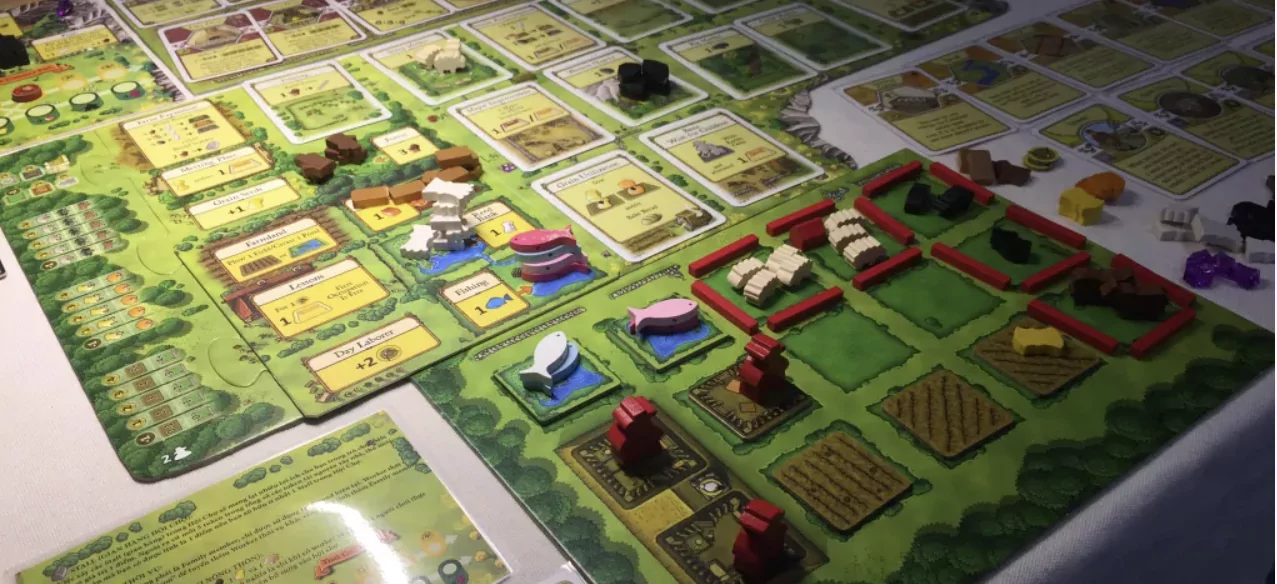Board Game Mechanics – Worker Placement
Worker placement is a mechanic used in some board games where players use limited “worker” pieces to perform various actions on the game board. Players take turns placing their workers on various spaces on the board that correspond to different actions they want to take, such as collecting resources, building structures, or advancing their goals.
Once a player has placed a worker, that space becomes occupied and cannot be used by other players until the worker is removed. This creates a strategic element as players must carefully consider which actions they want to perform, and when, since popular actions may become unavailable if multiple players try to use them at the same time.
The worker placement mechanic is a key element of many popular euro-style board games, and is known for creating a rich and challenging strategic experience for players.
Here’s a simplified example of worker placement mechanic in a board game:
Number of Workers: Each player starts with a set number of workers, typically represented by wooden or plastic pieces.
Action Spaces: The game board features various spaces, each of which corresponds to a different action that the player can take. Examples of actions might include collecting resources, constructing buildings, or gaining points.
Placing Workers: On a player’s turn, they choose one of their workers and place it on an available action space. Once placed, the worker remains on that space until the player decides to remove it.
Occupied Spaces: Once a player has placed a worker on a space, that space becomes occupied and cannot be used by other players until the worker is removed.
Taking Actions: When a player places a worker on an action space, they take the corresponding action immediately. For example, if they place a worker on a space that collects resources, they take the resources from the supply.
Removing Workers: At the end of their turn, the player must remove one of their workers from the board. This can be any worker, including one that was just placed on a space.
End Game: The game ends when a predetermined condition is met, such as when a certain number of points are earned or a certain resource is depleted. The player with the most points at the end of the game wins.
These are just basic rules for a worker placement mechanic, and specific rules may vary depending on the game. The key idea is that players take turns placing their workers on the board to perform various actions, and must carefully consider their choices due to the limited number of workers and occupied spaces.
Here are 10 popular board games that use worker placement mechanic:
Here is a specific example of worker placement mechanics using the popular board game Agricola:
Number of Workers: Each player starts with two workers (families) represented by wooden meeples.
Action Spaces: The game board features various spaces, each representing a different action that the player can take. Examples of actions include: planting crops, gathering resources, building fences, and having children.
Placing Workers: On a player’s turn, they choose one of their workers and place it on an available action space. Once placed, the worker remains on that space until the end of the player’s turn.
Occupied Spaces: Once a player has placed a worker on a space, that space becomes occupied and cannot be used by other players until the worker is removed.
Taking Actions: When a player places a worker on an action space, they immediately take the corresponding action. For example, if they place a worker on the “Gather Wood” space, they take two wood from the supply.
Removing Workers: At the end of their turn, the player must remove one of their workers from the board. This can be any worker, including one that was just placed on a space.
End Game: The game ends after 14 rounds, or when one player has completed all the spaces on their player board. The player with the most victory points at the end of the game, earned by various actions such as having a large family, having a diverse range of crops, and building structures, wins.
These rules provide a basic understanding of how the worker placement mechanic works in Agricola. It’s important to note that there are many more rules and mechanics in the game that impact the player’s choices and strategies, but the worker placement mechanic is a key element that drives the game’s decision making and strategy.

